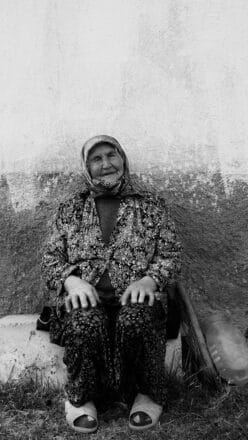Navigating through the golden years often comes with a host of health challenges. In this valuable resource, “Understanding Risk Factors for Falls in Older Adults: Disease, Medications, and Sarcopenia,” you will gain insight into a significant concern – falls among older adults.
This not-so-uncommon occurrence can lead to severe injuries and, in some cases, long-term disability. A variety of factors influence these incidents, such as age-related conditions like heart disease, diabetes, and sarcopenia, a loss of muscle mass that accompanies aging. But it’s not just disease – certain medications with side effects like dizziness can heighten your risk.
Fortunately, preventative measures abound, ranging from regular exercise and effective medication management to frequent vision checks and home safety improvements. The article is a comprehensive guide on maintaining stability and preventing falls, all while preserving your overall health and promoting bone health in your golden years.
Understanding the Prevalence of Falls in Older Adults
Older adults, particularly those aged 65 or more, are often at a greater risk of experiencing falls. These are not just simple stumbles but can lead to severe injuries, long-term disability, and in some cases, fatalities. Shockingly, more than one in four older adults fall each year, and this risk increases with age.
Frequency and Consequences of Falls
It is alarming to note that falls are exceedingly common in the aging demographic. Often, these falls can result in serious consequences, such as broken bones and head injuries. A fall can also lead to a fear of falling again, causing older adults to limit their activities, leading to physical weakness and an increased possibility of another fall.
Factors Contributing to Increased Fall Risks with Age
Several factors contribute to the increased risk of falls with advancing age. Among these are chronic health conditions like diabetes, heart disease, and thyroid, nerve, foot or blood vessel problems. These conditions can affect balance, stability, and coordination, making it more likely for an individual to experience a fall.
Key Diseases Contributing to Fall Risks
Effect of Diabetes on Balance and Stability
Diabetes, particularly in older adults, may lead to a decrease in mobility due to peripheral neuropathy or damage to the nerves in the legs. This can make maintaining balance a challenge, thereby increasing the risk of falls.
How Heart Disease Factors into Falls
Heart disease can also significantly influence fall risks in older adults. Conditions such as arrhythmias or irregular heart rhythm can cause dizziness, potentially leading to falls. Similarly, conditions like heart failure may result in reduced physical ability, further increasing fall risks.
Neural Diseases and their Impact on Balance
Diseases like Parkinson’s or multiple sclerosis can affect an individual’s ability to move, balance, and walk easily, thereby increasing their likelihood of falling. These conditions may cause stiffness, slowed movement, and tremors leading to instability.
Implications of Foot and Blood Vessel Issues
Foot problems including arthritis, bunions or swollen feet, can affect balance and lead to a higher chance of falls. Likewise, conditions affecting the blood vessels such as Peripheral Artery Disease (PAD) can also lead to a higher risk of falls due to decreased blood circulation and numbness in the limbs.
Role of Thyroid Problems in Falls
Thyroid disorders, particularly in older adults, can cause a myriad of symptoms including muscle weakness, poor coordination and even fainting spells, all of which heighten the risk of a fall.

Influence of Medications on Fall Risks
It’s important to note that certain medications can also lead to increased fall risks among older adults, especially if they induce dizziness or confusion.
Common Medications that Induce Dizziness
Certain medicines, such as blood pressure drugs, heart medications, or sedatives can cause side effects like dizziness or lightheadedness, leading to instability and increased fall risk.
Understanding the Link Between Drugs and Confusion
Confusion, often a side effect of medications like tranquilizers and sleeping pills, can increase the likelihood of falls in seniors.
Implications of Different Drug Side Effects
The side effects of specific drugs can be multifaceted, from causing dizziness and confusion to contributing to muscle weakness or low blood pressure. It is critical to understand and manage these side effects to prevent falls.
Sarcopenia as a Risk Factor for Falls
Definition and Development of Sarcopenia
Sarcopenia, a condition characterized by an age-related loss of muscle mass, can significantly increase the risk of falls in older adults. Along with a decrease in balance, strength, and physical performance, this condition can make simple daily activities increasingly hazardous.
How Sarcopenia Affects Balance and Gait
With the loss of muscle mass and strength, mobility and balance see a noticeable decline. This can make tasks like getting up from a chair or bed increasingly difficult, leading to a higher likelihood of falls.
Link Between Sarcopenia and Decreased Blood Pressure
Sarcopenia is linked to orthostatic hypotension, where the blood pressure drops steeply upon standing up. This swift drop can lead to dizziness or fainting, significantly increasing the risk of falls.

Falls Prevention: The Importance of Regular Exercise
Role of Exercise in Fall Prevention
Regular exercise helps improve strength, balance, coordination, and flexibility, all important factors in preventing falls. Exercise has also been shown to improve overall health and well-being, which can reduce the risk of falls overall.
Best Physical Activities for Older Adults
Walking, swimming, yoga, and tai chi are some great low-impact exercises for seniors. These activities not only improve balance and stability but also contribute to better overall health.
Effects of Exercise on Muscle Mass and Balance
Regular physical activity is crucial in preserving muscle mass and enhancing balance. By stimulating muscle growth and improving coordination, exercise plays a crucial role in counteracting conditions like sarcopenia and preventing falls.
Medication Management to Reduce Fall Risks
Importance of Understanding Medicinal Side Effects
Understanding the potential side effects of medications, like dizziness and confusion, is crucial in preventing falls. This understanding allows people to take necessary precautions and manage their medication better.
Ways to Properly Manage Medication Usage
Proper management of medication involves taking pills as prescribed, keeping a log of medication usage, and discussing any noticeable side effects with healthcare providers.
Role of Healthcare Providers in Managing Medication
Healthcare providers can play an integral role in managing medication for seniors. Through regular medication reviews and careful monitoring, they can mitigate the risk of adverse side effects that could lead to falls.

The Role of Vision in Preventing Falls
Impact of Eyesight on Balance and Falls
Good vision is essential for maintaining balance and preventing falls. Vision problems can make it difficult to navigate spaces and spot potential hazards, increasing the risk of falls.
Importance of Regular Vision Checks
Regular vision checks can help detect age-related vision problems early, ensuring that older adults can continue to navigate their environments safely and avoid hazards that might cause a fall.
Choosing the Right Eyewear for Seniors
The right eyewear is crucial in ensuring clear vision and safety. It’s important to consider factors like the fit, comfort, lens type, and prescription when choosing eyewear for seniors.
Home Safety Measures to Prevent Falls
Potential Fall Hazards at Home
Potential fall hazards at home include cluttered spaces, loose rugs, poor lighting, and slippery floors. Identifying these can help in taking effective measures to prevent falls.
Modifications to Enhance Home Safety
Enhancements like adding grab bars in the bathroom, improving lighting, removing trip hazards, and installing non-slip mats can go a long way in making a home safer for older adults.
Incorporating Assistive Devices for Better Safety
Using assistive devices like handrails, raised toilet seats, and walkers can be extremely beneficial in preventing falls. These devices help increase stability and mobility, especially in high-risk areas like staircases and bathrooms.
The Role of Healthy Bones in Fall Prevention
Understanding Osteoporosis and its Impact on Falls
Osteoporosis is a disease that weakens bones, increasing the risk of fractures in case of a fall. Even a minor fall can result in dangerous injuries for people with this condition, making fall prevention even more critical for those with osteoporosis.
Importance of Maintaining Bone Health
Healthy bones can better withstand the impacts of a fall, reducing the risk of serious injury. Regular exercise, maintaining a healthy weight, and having a balanced diet rich in calcium and vitamin D all contribute to good bone health.
Recommended Dietary Intake for Calcium and Vitamin D
Calcium and vitamin D are essential for maintaining bone health. Including foods rich in these nutrients like dairy products, fish, and fortified grains and cereals in a regular diet can help maintain bone density and prevent fractures.
What to Do After a Fall
Assessing Injuries Following a Fall
In the event of a fall, it’s essential to remain calm and assess any potential injuries. Key attention should be given to any feelings of pain or discomfort, especially in areas where there is direct impact.
Ways to Get Up Safely After a Fall
Getting up hastily after a fall can lead to more harm. It’s important to get up slowly, using nearby objects for support if necessary. Rolling onto sides and using hands and knees to rise can be a safer way to get up.
When to Call for Professional Help
If mobility is limited or there’s severe pain after a fall, it’s crucial to call for professional help. Situations where the person is unable to get up, loses consciousness, or experiences severe bleeding should be treated as emergencies and require immediate medical attention.
To conclude, falls in older adults can be life-altering events, but with adequate precautions and understanding, the risks can be greatly mitigated, leading to improved safety, comfort, and longevity.
